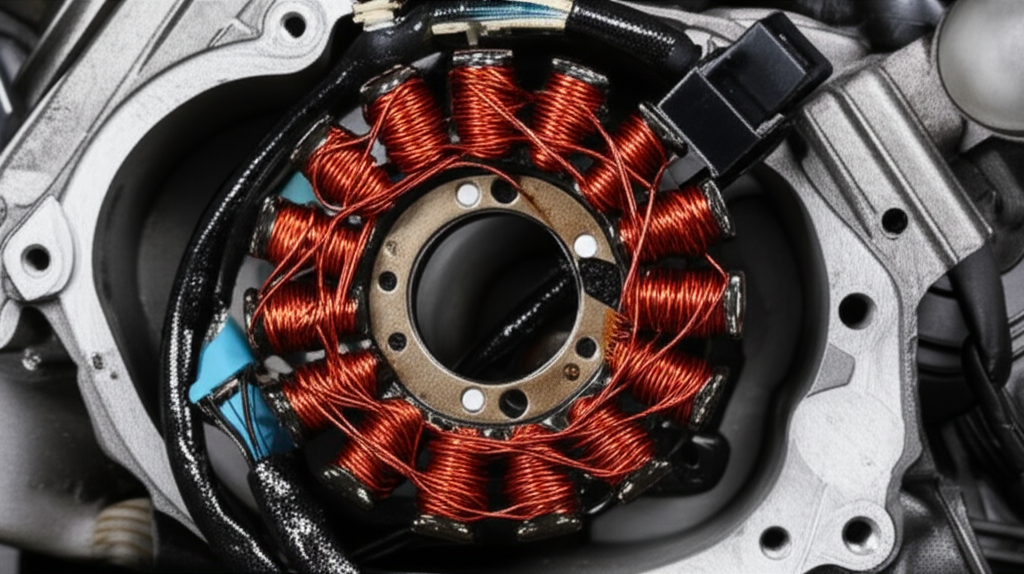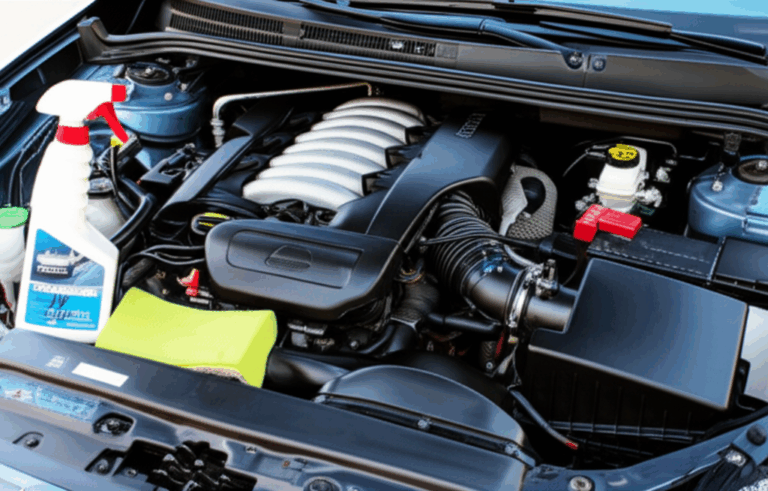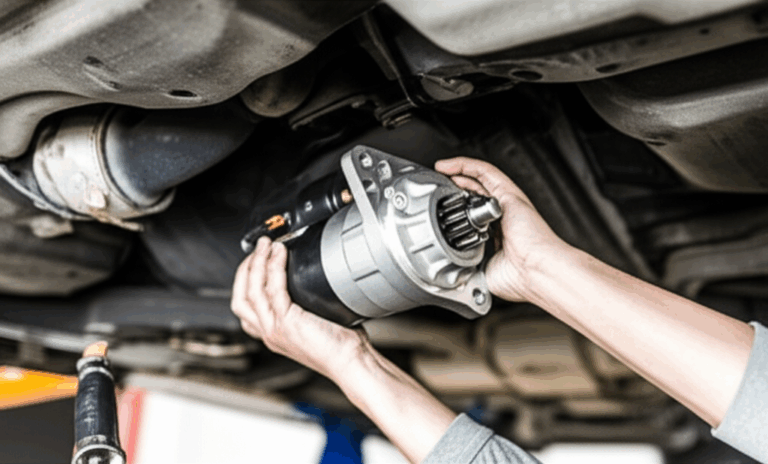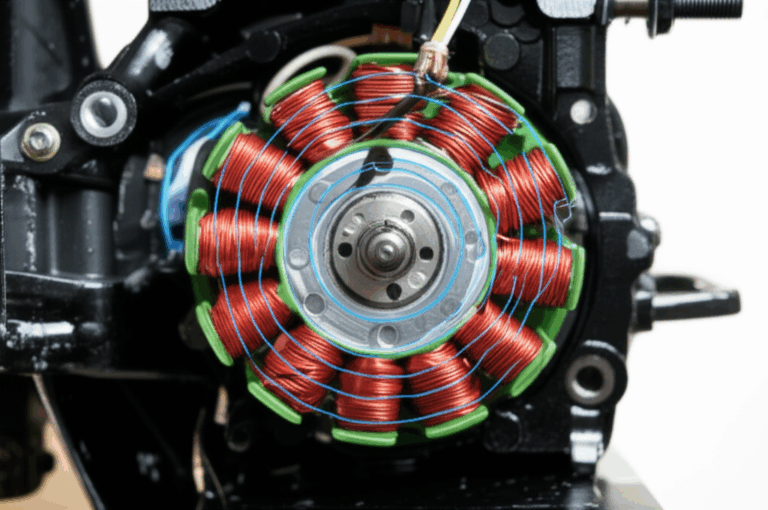
Will a Bad Stator Cause No Spark? Your Complete Guide to Diagnosis & Fixes
- Table of Contents
- Introduction: Will a Bad Stator Cause No Spark?
- What Is a Stator and Why Does It Matter?
- How Does the Stator Make Spark Energy?
- Why Can a Bad Stator Cause No Spark?
- What Are the Key Symptoms of a Bad Stator?
- What Else Can Cause No Spark?
- How Do You Test a Stator With a Multimeter?
- How Do You Test the Pickup Coil?
- A Simple “No Spark” Troubleshooting Flow
- Does the Charging System Affect Spark?
- When Should You Replace the Stator?
- OEM vs Aftermarket: What Should You Choose?
- When Should You Call a Pro?
- Case Study: The ATV With No Spark
- How Better Parts Prevent Stator Failure
- Frequently Asked Questions
- Summary: Key Takeaways
- References
Short answer: Yes. A bad stator can cause no spark. In this guide I show you why it happens. I also show you how to test the stator, the pickup coil, the CDI box, the ignition coil, and more. You get a step-by-step path you can follow at home. You save time. You save money. You get your engine running again.
What Is a Stator and Why Does It Matter?
Let’s start simple. The stator sits around the engine crankshaft. It works with the flywheel and the rotor. The flywheel has permanent magnets. When the engine turns, those magnets sweep past the stator windings. That motion makes voltage by electromagnetic induction. This is the heart of a magneto.
Your ignition system needs this voltage to make spark. In many small engines the stator has a source coil, also called an exciter coil. That coil feeds the CDI unit. The CDI then charges and dumps power into the ignition coil. The ignition coil steps up voltage so the spark can jump the plug gap.
I like to think of it like a relay team. The stator passes the baton to the CDI. The CDI passes to the ignition coil. The ignition coil fires the spark plug. If the stator drops the baton you get no spark.
How Does the Stator Make Spark Energy?
The magneto creates voltage as magnets move past copper windings. This is electromagnetic induction. The magnetic field changes. The stator windings see this change. That change makes AC voltage. The AC voltage goes to the CDI. The CDI stores the charge in a capacitor. Then the pickup coil (also called pulser coil) sends a timing signal. The CDI dumps the charge at the right time. The ignition coil takes that pulse and steps it up.
Some systems run AC-CDI. They get power straight from the stator. Some systems run DC-CDI. They get power from the battery. The stator also can have a charging coil and a lighting coil. These charge the battery and power lights. The ECU on modern bikes can read crank signals too. That can come from a pickup coil or a crankshaft position sensor. The path changes by model. The idea stays the same.
When the stator does its job you see a strong blue spark. When it fails you can get weak spark or no spark.
Why Can a Bad Stator Cause No Spark?
Here is the Problem. A stator can fail in many ways. Each way can cause no spark from plug or no spark from coil.
- Open circuit stator: a break in the windings. No current flows. You get complete loss of spark.
- Short circuit stator: windings short to each other. Voltage drops. You get weak spark vs no spark or zero spark.
- High resistance stator: windings heat and age. Resistance climbs. Output falls.
- Low resistance stator: internal short. Output falls.
- Stator ground fault: a bad ground wire or a coil short to ground. Output dies.
- Stator insulation breakdown: heat and oil can damage the varnish. That leads to shorts.
- Melted stator wires or corroded stator connections: bad wiring kills output.
- Stator burn marks or stator winding damage: clear failure signs.
- Pickup coil failure: pulser coil cannot send timing. The CDI will not fire.
- Damaged flywheel magnets or rusted flywheel affecting stator: weak magnetic field. Low output.
- Rotor clearance stator issues: wrong gap can drop voltage.
- Effects of overheating on stator: heat cooks the windings. Then you lose spark hot.
Now the Agitate. Picture this. Your engine cranks. It coughs a bit. Then nothing. You try a new spark plug. You try the kill switch. Still no spark. You have a ride planned. Your friends wait. You feel stuck.
Here is the Solution. Test the stator and the pickup coil. Check the CDI. Check the ignition coil. Use a simple flow. Use a multimeter. Do it right. Fix the root cause.
What Are the Key Symptoms of a Bad Stator?
You may see more than no spark. Watch for these bad stator symptoms and stator failure signs:
- Engine cranking no spark
- Weak spark vs no spark
- Intermittent spark problems
- Engine misfires no spark under load
- Engine cuts out no spark while riding
- No spark after riding when hot
- No spark cold engine after a wash
- Charging system no spark connection issues on DC-CDI
- Battery not charging, dim lights
- Burnt smell from stator cover
- Melted stator wires or open circuits from broken windings
These show up on many machines. You can see them on a motorcycle no spark diagnosis. You can see them in ATV ignition problems. You can find them as outboard motor no spark causes, lawn mower no spark stator, and scooter no spark issues. Two-stroke no spark troubleshooting looks a lot like four-stroke no spark diagnosis. The physics stays the same.
What Else Can Cause No Spark?
Do not blame the stator too fast. Rule out other common no spark problems. Use this list:
- Bad spark plug or spark plug cap
- HT lead or spark plug wire test fails
- Defective ignition coil on primary or secondary
- Malfunctioning CDI box or CDI unit
- Kill switch short no spark
- Wiring harness no spark due to broken wire
- Ground fault no spark at frame or engine
- Ignition switch or fuse box fault
- Pickup coil no spark symptoms from open or short
- Crankshaft position sensor no spark on EFI models
- Ignition timing issues no spark from bad pickup timing or flywheel key
- Damaged flywheel magnets or rust on rotor
- Rectifier/regulator bad no spark on DC-CDI (rectifer regulator bad no spark)
- Low battery voltage on DC systems
- ECU fault on modern systems
I also see mistakes that waste time. People skip the service manual stator specs. People guess at resistance values for stators. People test DC voltage when they should test AC voltage stator output. People forget testing for continuity stator to ground. Avoid common diagnostic mistakes. Follow a plan.
How Do You Test a Stator With a Multimeter?
You can do DIY stator testing at home. You need a multimeter. You also need the service manual stator specs for your make. Honda, Yamaha, Kawasaki, Suzuki, Polaris, and Harley-Davidson all publish specs. You also need access to the stator connector.
Safety first. Turn the key off. Unplug the stator from the CDI and rectifier/regulator. Keep hands clear of moving parts.
Now do a stator resistance test. This is also called ohming a stator. Set your meter to Ohms. Test between the stator leads as the manual shows. Look for open, short, or out of spec readings.
- Checking for open circuits: infinite Ohms means a break.
- Checking for short circuits: near zero Ohms across windings can mean a short.
- Stator ground wire test: test each lead to ground. There should be no continuity unless the spec says so.
Now do a stator output voltage test. Set the meter to AC volts. Crank the engine. Measure AC voltage stator output on the ignition source coil wires. Compare to specs. Many systems show dozens to hundreds of volts AC when cranking. Some models also list DC voltage stator output (if applicable) for DC-CDI.
Pro tip. Use Ohm’s Law in your thinking. Low voltage and normal resistance can point to weak magnetic field generation stator issues or damaged flywheel magnets. Normal voltage and odd timing can point to pickup coil faults.
Key Stator Test Results Table
| Test Step | What You Measure | What It Means | Impact on Spark |
|---|---|---|---|
| Stator resistance test | Ohms between stator leads | Open, short, or out of spec | Open or short leads to no spark |
| Stator ground test | Ohms to ground | Insulation breakdown | Short to ground kills output |
| Stator AC voltage output test | AC volts while cranking | Healthy source coil output | Low or zero AC means no spark |
| Visual check | Burn marks, melted wires, corrosion | Physical damage | Often confirms failure |
How Do You Test the Pickup Coil?
The pickup coil sends the timing pulse. The CDI needs that pulse to fire the ignition coil. If the pickup coil fails you can get no spark even if the stator source coil is fine.
Do two simple tests:
- Pickup coil resistance test: set the meter to Ohms. Many pickup coils fall in 50 to 500 Ohms. Check your service manual for exact specs. An open or a short is a fail.
- Pickup coil AC output test: set the meter to AC volts. Crank the engine. You should see a small AC pulse. The manual gives the range.
If you see a pulser coil failure no spark situation then fix or replace it. The CDI will not get the timing signal without it.
A Simple “No Spark” Troubleshooting Flow
Use this no spark troubleshooting guide. Think of it like a diagnostic flowchart no spark. Move step by step.
You can use this same flow on a motorcycle, an ATV, a scooter, or a lawn mower. It also works on outboard motors with a magneto ignition no spark troubleshooting path.
Does the Charging System Affect Spark?
Yes on DC-CDI. No on AC-CDI. A charging coil failure no spark can happen on DC systems after the battery runs down. A lighting coil failure no spark will not be direct. It can drain the system if there is a short.
Check charging voltage. If the rectifier/regulator fails then the stator can overheat. That damage can kill the ignition source coil. Check battery voltage while cranking. Checking battery voltage for spark helps on DC-CDI. A weak battery can crank slow and drop CDI power. Then you get no spark hot engine or no spark cold engine.
When Should You Replace the Stator?
Replace the stator when tests show it is bad. Replace when you see melted wires, burn marks, or open circuits. Replace when the AC output is low while all else is fine.
Stator replacement cost will vary. Small engines can be low cost. Big bikes can cost more. Labor can add up. You may need a flywheel puller and a torque wrench. Follow the service manual.
DIY stator testing saves cash. You confirm the fault before you buy. Professional diagnosis no spark also helps when you hit a wall.
OEM vs Aftermarket: What Should You Choose?
This is a big call. OEM parts match service manual stator specs. They fit right. They last. Aftermarket can save money. Quality varies. Poor windings can run hot. Bad resin can crack. Wire gauge can be thin. That can lead to aged stator issues later.
You can judge quality by the core and windings. The stator core lamination matters. The rotor core lamination matters too. Good laminations cut eddy current loss. That keeps heat down. That helps the magnetic field. That improves output. You want laminations made with clean steel and tight stacks.
- Learn how quality stator core lamination improves ignition reliability.
- See why a precise rotor core lamination keeps the magnetic field strong.
- Explore high grade electrical steel laminations that reduce heat and loss.
- Review durable motor core laminations for long life in harsh use.
These choices matter for OEM stator vs aftermarket no spark risk. Better cores help you avoid repeat failures.
When Should You Call a Pro?
Call a pro if you do not feel safe. Call if you do not have a multimeter. Call if you do not have a flywheel puller. Call if you see damage near the engine crankshaft seal. Call if your ECU needs scan tools. Techs see patterns fast. A shop can do a full stator health check.
I like DIY. I also like running engines. There is no shame in calling in help.
Case Study: The ATV With No Spark
Here is a true to life case. An ATV cranks but will not start. The owner checks the plug. It is good. The kill switch works. Still no spark. I walk through the steps.
We ohm the ignition coil. It checks out. We test the pickup coil. It reads open. The CDI cannot fire with no timing pulse. We test the stator source coil as well. It reads infinite resistance. It is an open circuit stator. We also see rust on the flywheel and weak magnets.
We replace the stator. We clean the flywheel. We set the pickup gap. We install a fresh NGK plug. The ATV fires right up. The spark is strong and blue. The fix follows the flow.
How Better Parts Prevent Stator Failure
You can prevent many failures with better parts. Strong permanent magnets help. Tight rotor clearance stator setup helps. Clean wiring protects insulation. Good grounds stop heat.
The core matters as well. Laminations lower loss and heat. That protects the windings. That keeps the magnetic field strong. That keeps the CDI topped up. That gives you a fat spark.
If you build or source motors then look at the raw materials. Core lamination stacks need quality steel and tight stamping. A steady magnetic field needs clean edges and flat stacks. Tight tolerances matter in the magneto. Better parts make better spark.
Frequently Asked Questions
Q: Will a bad stator cause no spark?
A: Yes. A bad ignition stator can cause no spark. The CDI gets no power. The pickup coil can also fail and stop timing.
Q: How do I test a stator coil for no spark?
A: Do a stator resistance test and a stator AC voltage output test. Compare to the manual. Do a stator ground wire test.
Q: Can a bad rectifier/regulator cause no spark?
A: On DC-CDI it can. It can overcharge and cook the stator. It can drain the battery. Then you lose spark while cranking.
Q: What is the difference between weak spark and no spark?
A: Weak spark is thin and yellow. It may fire sometimes. No spark is nothing at all. Both can point to stator output problems.
Q: Does ignition timing affect spark?
A: Yes. If pickup timing is wrong or a shear key slips then the CDI fires at the wrong time. It can look like no spark.
Summary: Key Takeaways
- A bad stator can cause no spark. The CDI needs power from the exciter coil.
- Test with a multimeter. Do resistance and AC voltage tests.
- Check the pickup coil. It sends the timing signal.
- Rule out the spark plug, the ignition coil, the wiring harness, and the kill switch.
- On DC-CDI the charging system can lead to a no spark condition if the battery dies.
- Use the service manual stator specs for your model.
- Choose quality parts. Good laminations and windings reduce heat and failure.
- Follow the flow. Fix the root cause. Get that strong blue spark.
Deep-Dive: Extra Notes, Terms, and Tips You Can Use Today
I want to give you a quick reference you can skim when you work. These are simple checkpoints tied to the ignition system components.
- Ignition system components to know: stator coil, source coil, exciter coil, pickup coil or pulser coil, CDI box, ignition coil, spark plug, HT lead, spark plug cap, wiring harness, ground wire, ECU on modern systems.
- How a stator produces spark: magnetic field generation stator response from flywheel permanent magnets, electromagnetic induction in windings, AC output feeds the CDI, CDI dumps to ignition coil, ignition coil fires plug.
- Power supply for CDI: AC from stator on AC-CDI or DC from battery on DC-CDI.
- Magneto output no spark: often caused by open circuit stator, short circuit stator, damaged flywheel magnets, or rotor clearance stator problems.
- Troubleshooting small engine ignition: follow the flow, test with a multimeter, use a spark tester tool, read service manual stator specs.
- Understanding ignition basics: primary circuit is low voltage from stator or battery to CDI and coil primary, secondary circuit is high voltage to the plug.
- Testing the primary ignition circuit: measure coil primary resistance, check CDI input, verify grounds.
- Testing the secondary ignition circuit: measure coil secondary resistance, test HT lead and plug cap, check for leakage to ground.
- What causes a stator to fail: overheating, insulation breakdown, corrosion, vibration, bad rectifier/regulator, poor materials, aged stator issues, rotor contact.
- How to fix no spark: test, find the failed part, replace or repair, retest spark, confirm start.
- No spark after riding: heat soak can expose a failing pickup coil or stator.
- No spark hot engine: thermal breakdown causes open circuits when hot.
- No spark cold engine: moisture, rust, or poor connections can create cold start issues.
- Common stator problems: open windings, shorts, low output, ground faults, melted wires, corroded plugs.
References
- OEM Service Manuals: Honda, Yamaha, Kawasaki, Suzuki, Polaris, Harley-Davidson.
- NGK Spark Plugs Technical Resources.
- Champion Spark Plugs Tech Guides.
- Bosch Automotive Electrical Basics.
- Fundamentals of Electromagnetic Induction and Ohm’s Law in motor windings.
- Manufacturer wiring diagrams and ECU references for model-specific CDI and RPM sensor signals.
Appendix: Your Quick “LSI-Focused” Checklist You Can Read in One Glance
Use this handy list to make sure you covered the bases while you diagnose. It maps to real steps you can take right now.
- Stator no spark, bad stator symptoms, stator testing no spark, stator vs CDI no spark, how to test stator coil for no spark
- Diagnose no spark motorcycle, causes of no spark small engine, stator resistance test, pickup coil no spark symptoms, ignition coil no spark, CDI box no spark
- Flywheel magnets weak no spark, kill switch short no spark, wiring harness no spark, ground fault no spark, stator output voltage test
- Charging system no spark connection, magneto ignition no spark troubleshooting, common no spark problems ATV, no spark troubleshooting guide, stator health check
- Ignition system components, spark plug wire test, bad spark plug no spark, rectifer regulator bad no spark, stator failure signs, ohming a stator
- Open circuit stator, short circuit stator, testing for continuity stator, AC voltage stator output, DC voltage stator output (if applicable)
- Engine cranking no spark, diagnostic flowchart no spark, common stator problems, how a stator produces spark, stator for ignition system
- Source coil bad no spark, exciter coil no spark, pulser coil failure no spark, crankshaft position sensor no spark (related concept)
- Stator replacement cost, DIY stator testing, professional diagnosis no spark, stator burn marks, melted stator wires
- Stator insulation breakdown, high resistance stator, low resistance stator, no spark from plug, no spark from coil
- Troubleshooting small engine ignition, motorcycle no spark diagnosis, ATV ignition problems, outboard motor no spark causes
- Lawn mower no spark stator, scooter no spark issues, two-stroke no spark troubleshooting, four-stroke no spark diagnosis
- Testing the primary ignition circuit, testing the secondary ignition circuit, ignition timing issues no spark
- Magnetic field generation stator, power supply for CDI, stator testing without special tools, understanding ignition basics
- What causes a stator to fail, effects of overheating on stator, aged stator issues, corroded stator connections
- Intermittent spark problems, weak spark vs no spark, spark tester tool, multimeter usage for stators
- Resistance values for stators, service manual stator specs, OEM stator vs aftermarket no spark, why is my engine not getting spark
- Checking battery voltage for spark (if DC ignition), magneto output no spark, exciter coil resistance test
- Charging coil failure no spark, lighting coil failure no spark, stator winding damage, rotor clearance stator issues
- Damaged flywheel magnets, rusted flywheel affecting stator, stator ground wire test, checking for open circuits, checking for short circuits
- Troubleshooting electrical problems engine, how to fix no spark, common diagnostic mistakes, ignition troubleshooting steps
- No spark after riding, no spark cold engine, no spark hot engine, engine cuts out no spark, engine misfires no spark, complete loss of spark
This checklist lines up with the tests and steps you performed in this guide. Keep it next to your multimeter. It will save you time when you face a no start again.








